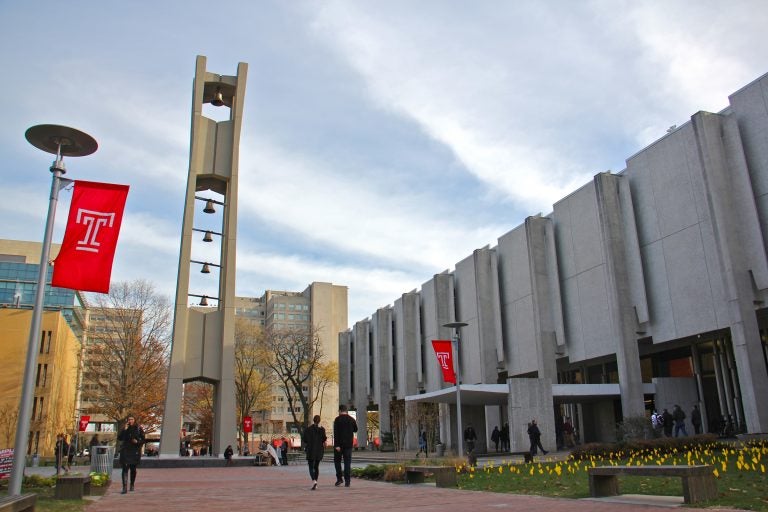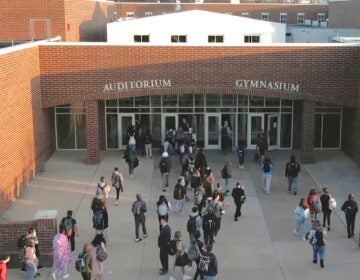Pa., Del. rely on tuition for 75 percent of public university funding
Twenty-eight states now depend more on tuition than state and local revenue to fund public universities.

Students walk past Samuel Paley Library on the Temple University campus (Emma Lee/WHYY)
More than half the states in the country now rely more on tuition dollars than state aid to fund their public universities — and the situation is more pronounced in Pennsylvania and Delaware, according to a new report. The State Higher Education Executive Officers Association produced the report that shows a tipping point across the country.
“It certainly was not unexpected, and it didn’t come out of the blue. It’s a trend that’s been developing over the last many years,” said Andy Carlson, association vice president of finance policy and member service.
This year, 28 states depended on tuition — rather than state and local funding — to cover the majority of costs for public universities.
“This is another data point to make clear that there is a bit of an affordability crisis going on in higher education or postsecondary education,” Carlson said. “At a time when attending college — whether you’re getting a certificate or an associate’s degree or a bachelor’s degree — can never be more critical if you want to have a chance at a middle-class existence.”
Many states will have to address that challenge, he said.
Pennsylvania and Delaware are among four states where tuition now makes up more than 70 percent of their higher education revenue because of declining enrollment and diminishing state aid. Twenty-five years ago, higher education revenue in Delaware and Pennsylvania was evenly split between tuition and state dollars, but tuition now makes up three-quarters of that funding.
Overall, states expanded their higher ed support, and state financial aid reached an all-time high, according to the report.
But the moderate increases have not made up for previous losses, Carlson said.
“The impact of the recession in the early 2000s followed by the Great Recession was kind of a double whammy,” he said. “State funding per student remains $1,000 below where it was right before the Great Recession and $2,000 below where it was before the recession of the early 2000s.”
He said that led to an increased reliance on tuition.
Pennsylvania lawmakers must support the 14 state-owned universities to give students an accessible option, said state Sen. Vince Hughes during a Senate appropriations hearing last month.
“Budgets show your commitment. Budgets show your priorities. Budgets are moral documents. They evidence what you’re committed to,” said Hughes, D-Philadelphia.
“If we can’t make [college] free, we darn sure need to make it accessible,” he said.
The 14 universities of the State System of Higher Education include West Chester, Cheyney, Millersville and East Stroudsburg. The four state-related universities — Penn State, Pitt, Temple, and Lincoln — were included as public universities in Pennsylvania.
Delaware’s public universities include the University of Delaware, Delaware State University and Delaware Technical Community College.
WHYY is your source for fact-based, in-depth journalism and information. As a nonprofit organization, we rely on financial support from readers like you. Please give today.




